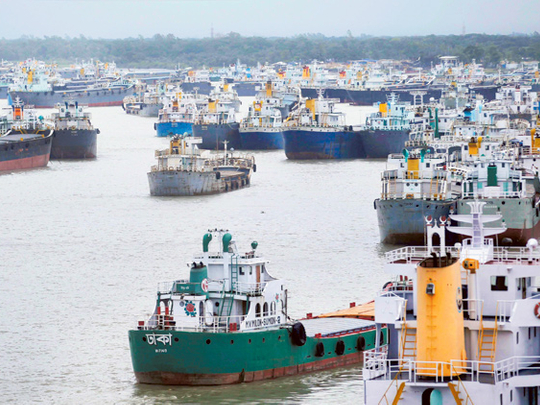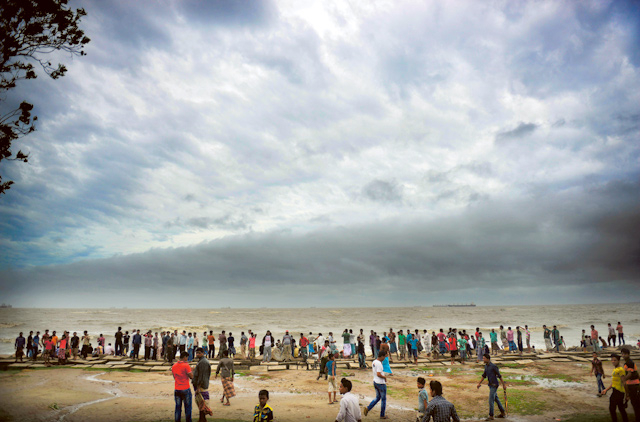
Dhaka: More than one million people were evacuated as cyclone Mahasen struck the southern coast of Bangladesh on Thursday, lashing remote fishing villages with heavy rain and fierce winds.
The cyclone left at least four people dead.
“The cyclonic storm Mahasen started crossing the coast near Patuakhali (Khapupara). The coast-grazing cyclone is likely to move in a northeasterly direction and may cross Chittagong-Cox’s Bazar coast by noon of May 16,” the latest Met office bulletin said.
It added the cyclone was centred at 9am about 270km southwest of Chittagong Port, 225km southwest of Cox’s Bazar Port and 210km south of Mongla port.
The bulletin came as unconfirmed reports said one person was killed as inflated waters coupled with gusts started ravaging parts of southwestern Patuakhali alongside the other areas adjacent to the Bay of Bengal in the region.
Tens of thousands of people were evacuated as a cyclone swirled earlier in the Bay of Bengal and approached Bangladesh coastlines with Met office director Shah Alam saying “we earlier said Mahasen could hit the coastline in the morning, but now we expect it to arrive by the midday as its speed has been slowed down”.
The evacuation campaign was launched last night as the Met office issued Danger Signal No 7 in a scale of 10 for northeastern coastlines while authorities said armed forces were kept prepared with troops, ships and helicopters to launch rescue operations when the storm hit the coast.
But reports and residents said gusty winds accompanied by thunder showers signalled the advancement of the storm on coastlines stretching from south-eastern Teknaf to southwestern Khepupara.
Red Crescent volunteers used megaphones to ask people to move out of their homes.
The Met office said the cyclone may cross Chittagong-Cox’s Bazar coast by noon.
A bulletin said: “Due to very heavy rain (caused by the cyclone) landslides may occur at places over the hilly regions of chittagong division.”
Officials in Chittagong, Bandarban hill district and Cox’s Bazar, however, said as part of the evacuation campaign they asked people to move out of their homes at foothills fearing the downpour may cause deadly landslides.
Community radio services were launched after the deadly storm Sidr hit the southwestern coastline in 2007 and left 3,363 people dead and the subsequent Aila cyclone in 2009 claimed 190 lives.
Authorities yesterday temporarily closed the country’s two seaports in Chittagong and Mongla as well as airports in Cox’s Bazar and Chittagong while Bangladesh Inland Water Transport Authority (BIWTA) also ordered small boats and vessels to be stationed as a caution.
The disaster management department director general Abdul Wajed earlier told BSS people whose households were exposed to tidal surges above 2m above the normal tide were a priority for the evacuation and were being sheltered at 3,770 permanent cyclone shelters.
Under an amended law, Wajed said, the local administration at the Chittagong and Cox’s Bazar were asked to declare, if required, the commercial establishments such as hotels as makeshift shelters for people once the cyclone hit the coast.
“We have provided the air force with 20,000 special parachutes to drop packs of emergency food, each weighing seven and half kilograms, in places where helicopters could not land,” Wajed said.
Asked what the most crucial challenge the rescuers were exposed to, the disaster management chief said “clean water” adding adequate food grains were there to be provided to people.













